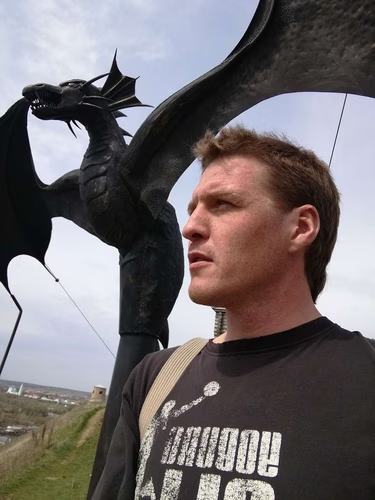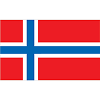🚤 Which fjord excursions are a must-see in Norway? TOP 3
If you want to quickly and vividly experience the ‘DNA’ of Norway, start with these three fjords. They are different in character, but equally cinematic and perfectly integrated into the logistics of the trip.
🏆 TOP 3 fjord cruises — comparison
🗺️ How to fit in the TOP 3 in 2–4 days (ready-made itineraries)
- 2 days (from Bergen):
Day 1 — Hardanger (Nærheimsund ↔ Eidfjord) + viewing points at Vøringsfossen.
Day 2 — early transfer to Flåm, cruise on Nærøyfjord, evening train/return.
- 3 days (Alesund/Geiranger):
Day 1 — Geiranger cruise + viewing points.
Day 2 — transfer via Strøne/Sogndal.
Day 3 — Nærøyfjord (Flåm/Gudvangen).
- 4 days (classic Oslo→Bergen):
Day 1 — train to Flåm, Nærøyfjord.
Day 2 — transfer to Geiranger, evening at the viewing platforms.
Day 3 — cruise along Geiranger.
Day 4 — Hardanger on the way to Bergen.
🧭 Selector ‘according to your conditions’ (base/season/format)
🚢 Starting points, duration and life hacks
- Nærøyfjord: start/finish — Flåm and Gudvangen (both ways). Duration ~2–2.5 hours.
Where to stand: on the right side when heading towards Gudvangen — light and waterfalls; on the left side when heading in the opposite direction.
Combo: Stegastein viewing platform + mini trail through the Flåm valley.
- Geirangerfjord: start — Geiranger or Hellesylt. Classic ~2–3 hours.
Where to stand: on the bow/side closer to the right side when leaving Geiranger — views of the Seven Sisters.
Combo: Ørnesvingen and Dalsnibba viewpoints on the same day.
- Hardanger Fjord: starting harbours — Nærheimsund, Eidfjord, Odda; cruises 2–6 hours.
Where to stand: on the middle deck closer to the side — less spray, more stable shot.
Combo: viewing platforms at Vøringsfossen and orchards.
🌤️ When to go and what to expect by season
- May–September: the most convenient period: warm decks, frequent flights, viewing platforms and trails open.
- April/October: dramatic light, but fewer trips, flexibility required.
- November–March: limited choice of trips; wind/rain/snow — normal reality. The ships are comfortable, but it's cold on deck — bring layers.
🧩 Season calendar (one touch)
💵 Budget calculator (cruises + travel + food)
🌦️ Weather risk and deck comfort
- Wind/spray: keep your hood/membrane, microfibre and strap on your camera.
- Cold even in summer: it feels 5–10°C colder by the water.
- Rain ≠ a reason to cancel: after rain, the waterfalls are more powerful, the air is cleaner, and the shots are more contrasting.
- Children: choose medium-length flights, warm clothes and a hot drink.
🧩 ‘Weather Risk Assessment’ memo (offline)
Photo cheat sheet for fjords
- Base: f/5.6–8 · 1/250–1/1000 (from the deck) · ISO 100–400; at dusk, increase ISO and keep the exposure shorter.
- Long exposure: ND filter, support on board, series of 2–3 frames.
- Smartphone: HDR, continuous shooting, turn on the grid, lean on the railing.
🧩 Mini master of settings (interactive)
🎒 Fjord Day Checklist (saved in your browser)
🛡️ Safety and etiquette
- Take photos only from decks/platforms; do not climb over railings.
- Do not place tripods in aisles on the deck — people and waves are unpredictable.
- Children should wear warm outer clothing and hoods — the wind ‘eats away’ at the heat.
- Respect your neighbours: red light on your headlamp, do not shine lights into cameras.
- Do not feed the seagulls or litter — the fjords are fragile.
Conclusion: start with Nærøyfjord, add Geiranger and Hardanger — and in 2-4 days you will understand why Norway's fjords are a traveller's dream. Seasonal flights, a weather buffer, warm layers and a couple of simple life hacks — and you'll have both great photos and the pleasure of the most ‘Norwegian’ water in the world.
❓FAQ
For the ‘wow effect’ and tight timing, choose Nærøyfjord (Flåm–Gudvangen): it connects easily with the railway and offers a ‘narrow’ dramatic profile.
Layers + a membrane are essential: it's always cooler and windier on the water. Windproof glasses, microfibre for lenses, a thermos.
Yes. Take a medium-length excursion (2-3 hours), choose the middle deck and warm clothing. Keep snacks/hot drinks handy.
At the bow — wide panoramas and a ‘zoom effect’. On the side — more stable and less spray; change sides depending on the light spots and waterfalls.
Sometimes yes (for example, the short Hardanger + evening transfer to Flåm), but it's stressful. It's more comfortable to do 1 fjord = 1 day.
Yes. Nærøyfjord connects well with trains/buses; Hardanger and Geiranger — via catamarans and local buses. Allow 30–60 minutes between transfers.
In June–August — yes, otherwise you risk missing out on late flights. In the off-season — check the timetables and have a ‘plan B’ ready.
Not necessarily. After rain, the waterfalls are stronger and the air is cleaner. But the deck is slippery — wear shoes with treads and bring covers for your equipment.
Some ships have lifts/covered areas. Choose accessible winged boats/catamarans; arrive early and inform the crew of your needs.
Add Lysefjord (view of Preikestolen from the water), Nordfjord (near Strøna), Helseland (in southern Nordland) — but start with the TOP 3 from this guide anyway.





1 comment
Log in to leave a comment